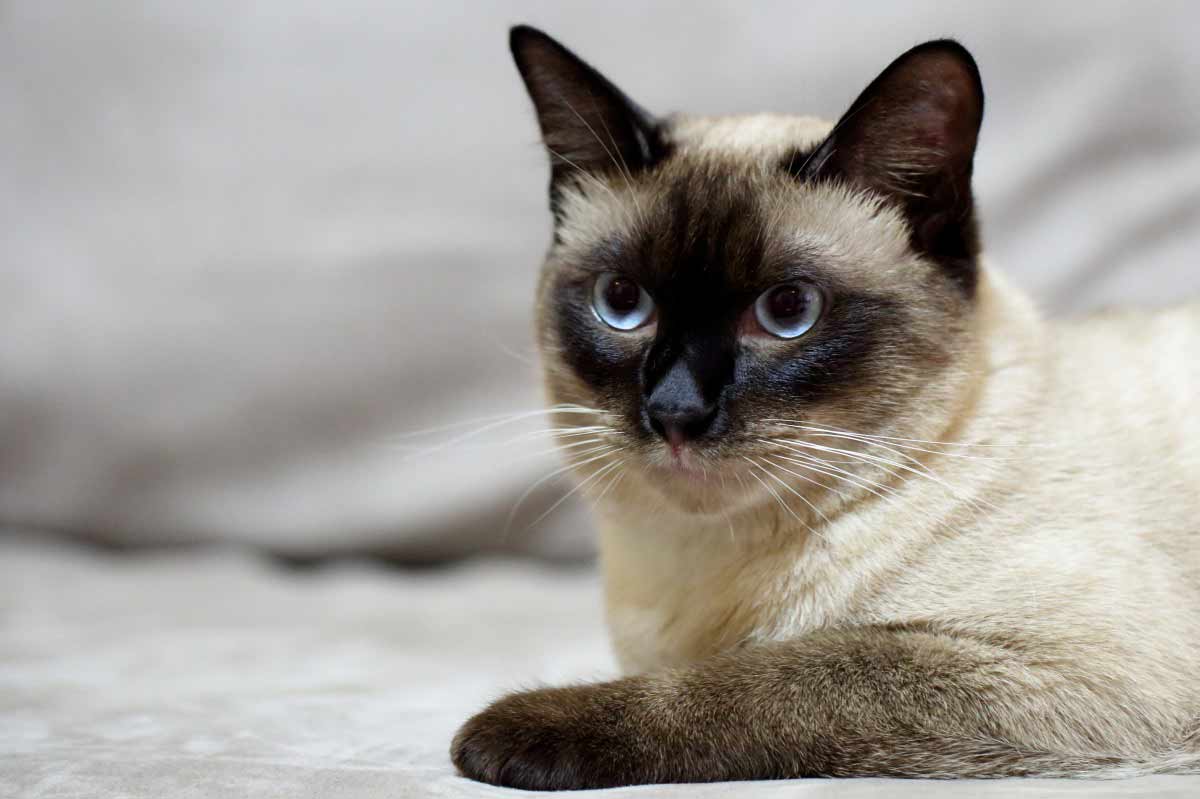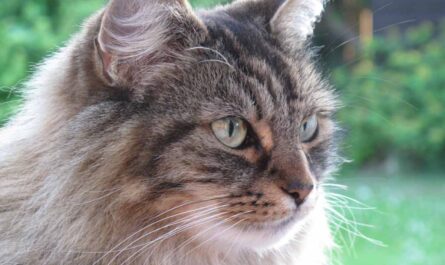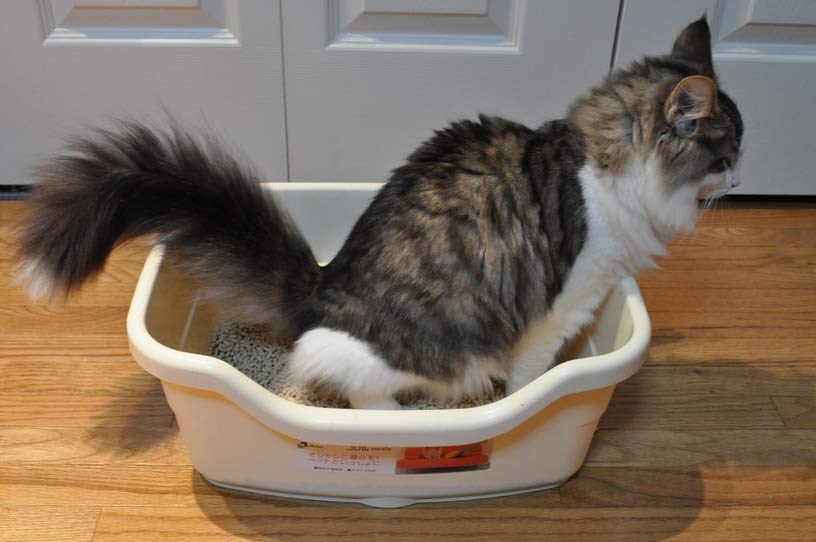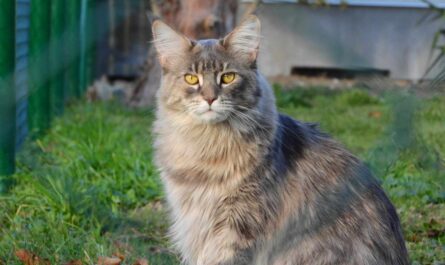What is a Tonkinese Cat Breed and what about its profile, traits, health, grooming, care, and other facts? The Tonkinese cat, a captivating feline, is a harmonious fusion of grace and muscularity, boasting a surprising weight for its slender frame. Its visage bears a striking resemblance to its forebears, the Siamese and Burmese cats, with medium-sized ears and beguiling almond-shaped eyes that can be adorned in hues of blue, green, or golden splendor.
Diversity graces the Tonkinese in its coat colors, with four officially recognized by the Cat Fanciers Association: natural, champagne, blue, and platinum. Moreover, within this spectrum, there are three distinct coat patterns – colorpoint, mink, and solid – resulting in an astonishing array of twelve potential color combinations.
When it comes to stature, these feline companions typically tip the scales between 2.5 and 5.5 kilograms, and their journey through life spans a respectable 10 to 16 years.
A Tale of Origins
The Tonkinese cat emerges from a fascinating history of crossbreeding, uniting the Siamese and Burmese breeds to encapsulate the most appealing physical and personality traits of both. This endeavor dates back to the late 1930s when Dr. Joseph Thompson introduced a “chocolate” Siamese from Myanmar to the United States. Unbeknownst to many, these “chocolate” Siamese cats in Thailand and Myanmar were, in reality, the product of natural unions between stray Siamese and Burmese felines.
While these unions likely transpired for many years, they weren’t intentionally bred until the 1950s, spearheaded by Milan Greer, who dubbed the resulting kittens “golden Siamese.” Greer eventually halted his breeding program, but other dedicated breeders picked up the mantle. The first official “Tonkanese” was registered by the Canadian Cat Association in 1967, though it wasn’t until 1984 that the Cat Fanciers Association granted official recognition.
Interestingly, the breed’s spelling underwent a curious journey. Initially dubbed “Tonkanese” as a nod to the musical “South Pacific,” set on an island where “half-breeds” faced no discrimination, it later underwent an official change to “Tonkinese” in 1971, inspired by the Bay of Tonkin in Vietnam.
As of 2013, the Tonkinese cat ranks as the 17th most popular pure breed in the United States, according to the Cat Fanciers Association.
Tonkinese Personality and Temperament
If you find yourself torn between the allure of Siamese and Burmese cats, the Tonkinese cat offers the perfect blend of both breeds. These charming felines inherit the best qualities from their Siamese and Burmese lineage.
Tonkinese cats are renowned for their exceptional temperament, characterized by an unwavering inclination toward warmth and sociability. These feline companions exude a gregarious charm, reveling in delightful and spirited interactions with their human counterparts. They possess an innate inquisitiveness, a profound curiosity that fuels their exploration of the world around them, leaving no nook or cranny unexamined. Their temperament is akin to a perpetual invitation to play, explore, and connect, making them irresistible to those seeking an affectionate and engaging feline companion.
Tonkinese cats boast delightful personalities, but their strong attachment to human companionship comes with a caveat. Leaving them alone for extended periods too frequently can lead to separation anxiety. If your work keeps you away from home often, consider adopting two Tonkinese cats to keep each other company. With a feline companion, they have someone to talk to and spend time with, reducing the risk of undesirable behaviors. Plus, you’ll receive double the affection!
These nimble cats are excellent climbers, with a penchant for reaching high vantage points. You’ll often find them atop refrigerators, tall cabinets, and other elevated spots. From these perches, they generously offer unsolicited advice on matters ranging from food levels in their dishes to entertainment choices. If you leave the room, expect your Tonkinese cat to follow you, eager to assist with whatever task you’re undertaking.
Like their Siamese and Burmese counterparts, Tonkinese cats harbor a love for water. Place a shallow pan of water on the floor with a few floating toys, and you’ll witness their playful antics. You might find it challenging to tear yourself away from their adorable water adventures!
Tonkinese cats may select a particular family member to shower with attention or distribute their affection equally among all household members. One thing is certain: When it’s time to cuddle, these felines are experts at creating warmth and comfort. Whether nestled in your lap during reading or TV time or lounging beside you in bed, their soft coats and loving purrs make them ideal companions.
Tonkinese Cat Behavior
The Tonkinese cat represents an enchanting blend of Siamese and Burmese lineage, and its temperament mirrors this exquisite fusion. It thrives on activity without venturing into the realm of hyperactivity, equally content to regale its owners and visitors with delightful antics as it is to luxuriate on the living room couch.
Affectionate, entertaining, and endowed with a melodious voice, the Tonkinese is celebrated for its child-friendly disposition. This sociable cat adores being an integral part of daily life and will merrily follow you around the house, often perching on your shoulders as you go about your daily routine. It’s far from being an aloof or snobbish breed.
In fact, Tonkinese cats exhibit an almost dog-like loyalty and do not relish prolonged solitude. To keep their spirits buoyant, it’s advisable to provide them with the companionship of another pet, be it a fellow feline or a canine compatriot. See why thousands of cats love BoxCat
Life Expectancy
The lifespan of a Tonkinese cat is nothing short of impressive, spanning a remarkable 14 to 16 years, bestowing upon their human guardians a substantial span of cherished companionship. These cats, with their enduring presence, become a steadfast fixture in the lives of their owners, offering love, loyalty, and shared experiences over the course of many years.
Size: The Compact Elegance of Tonkinese Cats
Tonkinese cats, often regarded as a marvel of feline elegance, boast a relatively small and graceful physique. On average, these enchanting creatures tip the scales at a modest 6 to 12 pounds, although some individuals may exceed this range. When it comes to height, they stand at a petite 8 to 10 inches, their compact stature belying the immense charm they bring into their owners’ lives.
Lifespan: A Decade and More of Tonkinese Companionship
For those fortunate enough to share their lives with a Tonkinese cat, the bond formed can endure for a remarkable span of time. These endearing felines typically enjoy an average lifespan that ranges between 14 to 16 years. This longevity underscores the rewarding nature of the relationship that can be forged with these cats, providing years of companionship, love, and joy.
Shedding: A Benefit of Short-Haired Beauty
One of the practical advantages of choosing a Tonkinese cat as a pet is their coat’s manageable shedding. Unlike their long-haired counterparts, these cats tend to shed significantly less. This means less time spent on cleaning up loose fur and a more pleasant living environment for both the feline and its human companions. Tonkinese cats offer the best of both worlds—striking beauty without the added burden of excessive grooming and maintenance.
Activity Level
In the domain of physical activity, Tonkinese cats reign supreme. Their vivacious spirit manifests in an exuberant engagement with active play. These spirited felines are not mere spectators; they actively demand both space and undivided attention to satiate their thirst for adventure. Their high activity level is an unspoken testament to their lively presence in any household.
Pet-Friendly
The compatibility of a Tonkinese cat with other furry family members, such as cats and dogs, is a matter as diverse as the feline kingdom itself. Each individual exhibits a unique disposition towards their fellow creatures. Successful integration often hinges upon the finesse of proper introductions and the diligent art of socialization, factors that can harmoniously bridge the gaps in their social dynamics.
Kid-Friendly
Tonkinese cats wear the badge of “kid-friendly” with honor. They boast a remarkable ability to be gentle and patient with children, rendering them invaluable as family pets. This characteristic endears them to parents and children alike, offering a source of unconditional love and entertainment for the younger members of the household.
Sociability
Sociability is an inherent trait woven into the very fabric of a Tonkinese cat’s existence. These social creatures thrive on companionship and eagerly seek out interactions with their human counterparts. Their presence serves as a constant reminder of their desire to be involved in the daily lives of their owners, fostering a deep sense of connection and companionship.
Intelligence
The intellectual prowess of Tonkinese cats is nothing short of remarkable. Their intelligence shines through their natural curiosity and investigative behavior. These cats are quick learners and readily adapt to various training methods, finding joy in the mental stimulation provided by engaging challenges. Their intelligence is a testament to their versatility as both affectionate companions and adept problem-solvers.
Playfulness
Blessed with strong hunting instincts, Tonkinese cats transform playtime into a thrilling adventure. They approach interactive play sessions with a fervor that borders on the spectacular. Their playful antics, punctuated by bursts of energy, are sure to captivate and entertain their human companions, forging an unbreakable bond through shared moments of joy.
Independence
The level of independence exhibited by Tonkinese cats is a spectrum as diverse as the colors of the rainbow. While they possess the capacity to endure moments of solitude, they undeniably thrive on the warmth of human interaction. Extended periods of isolation may lead to feelings of loneliness, underscoring their preference for the constant presence of their beloved guardians.
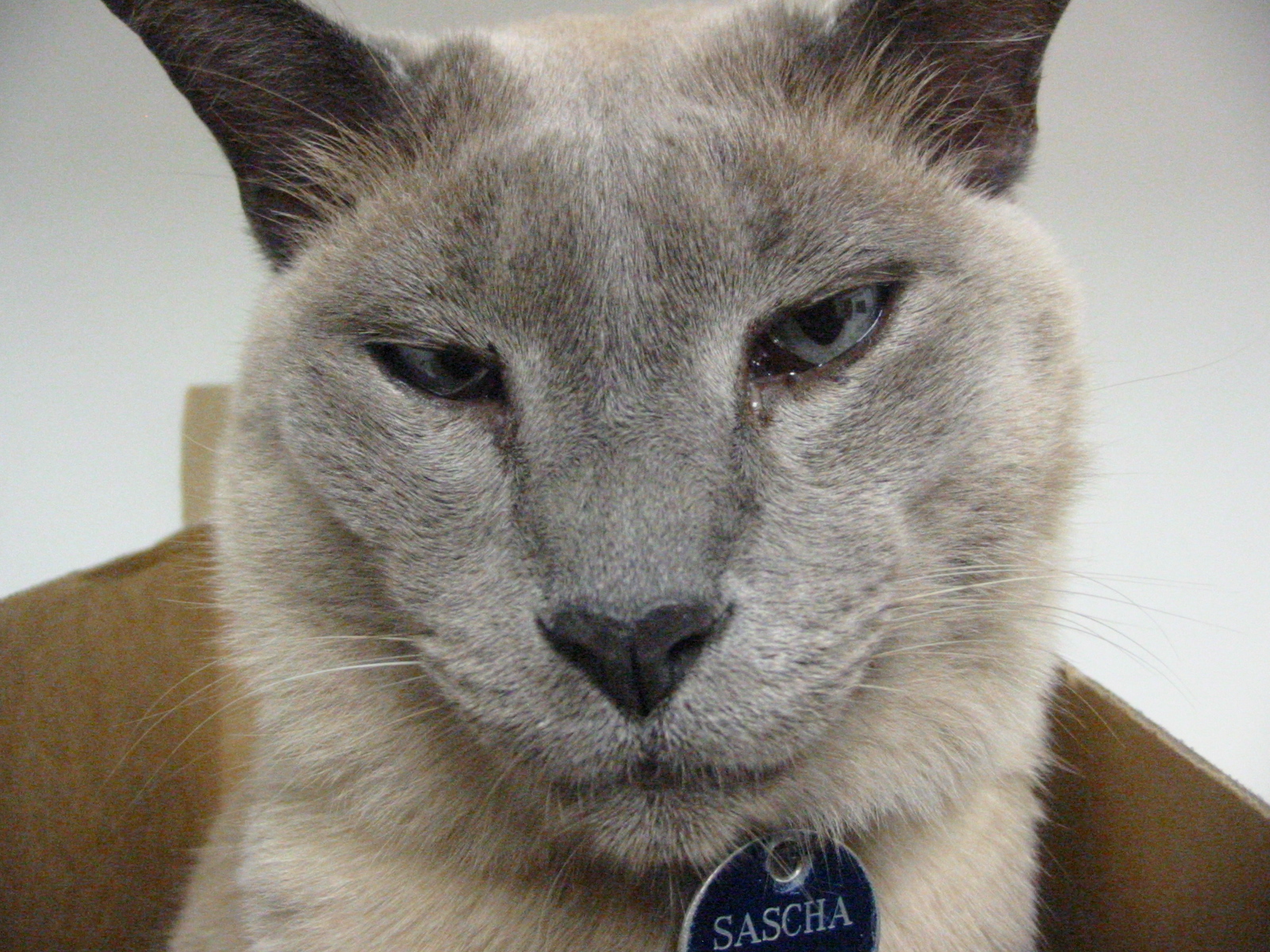
Vocality
The expressive vocalization of Tonkinese cats adds an enchanting layer to their personalities. Their communicative prowess extends beyond mere meowing, encompassing an array of sounds that convey their needs, desires, and emotions. These melodious felines employ their voices as a means of engaging in dialogue with their human companions, creating a unique and harmonious form of communication.
Grooming
The grooming requirements of individual Tonkinese cats are as varied as the patterns in a tapestry. While their short coats generally demand minimal attention, some may benefit from regular brushing and the occasional indulgence of a soothing bath. This diversity in grooming needs underscores the importance of understanding and catering to the specific preferences of each unique Tonkinese cat, ensuring their fur remains in impeccable condition.
Affection Level
Tonkinese cats are undisputed champions in the realm of affection. Their hearts overflow with love, and they enthusiastically express it through both the giving and receiving of attention. They embody the essence of an ideal companion for those who yearn for a pet that revels in love’s tender exchanges. Nevertheless, it’s worth noting that individual Tonkinese cats may exhibit slight variations in their preference for constant petting and snuggles, owing to their unique personalities.
Navigating Health Concerns
As with any living being, Tonkinese cats are not immune to health challenges. Here’s a brief overview of some potential issues and how to address them:
- Amyloidosis: This ailment arises from the accumulation of a protein called amyloid in the body’s organs, often affecting the liver in Siamese cats. Warning signs encompass loss of appetite, lethargy, frequent urination, excessive thirst, weight loss, vomiting, bloody urine, and an enlarged abdomen. While there is no cure, a veterinarian can provide symptomatic treatment.
- Subvalvular Aortic Stenosis: This heart condition stems from a weak connection between the left ventricle and the aorta, leading to fainting and, in severe cases, even death. It is both detectable and treatable with the appropriate medical intervention.
- Progressive Retinal Atrophy: This term encompasses a cluster of eye conditions that entail the gradual deterioration of the retina. Night vision fades in the early stages, followed by the loss of daytime vision as the condition advances. Most cats adapt well to this loss, provided their environment remains consistent.
- Hyperesthesia Syndrome: This neurological condition prompts cats to engage in excessive self-grooming, leading to hair loss and agitation when touched.
- Gum Disease: Tonkinese cats may be susceptible to gum diseases, necessitating regular examinations. Timely intervention is crucial, as some gum conditions can pose life-threatening risks. Frequent tooth brushing can thwart periodontitis, a condition that, if left unchecked, can culminate in kidney and heart issues.
- Additional Concerns: The Tonkinese breed may also be prone to asthma, crossed eyes, megaesophagus, lymphoma, and nystagmus, a neurological disorder characterized by involuntary rapid eye movements. Cat accessories on Amazon
The Breed Standard
- Eyes: Tonkinese cats have almond-shaped eyes that slant along their cheekbones toward the outer edges of their ears.
- Legs & Paws: Their legs are slim and proportionate, with hind legs slightly longer than forelegs. Their paws are well-proportioned ovals.
- Tail: The Tonkinese cat’s tail is well-proportioned with a tapered but not whippy shape.
- Body: They possess a medium torso with well-developed muscles and a firm abdomen, presenting a balanced physique that is neither excessively long nor compact.
- Head: Their head is a slightly rounded wedge, longer than it is wide. A blunt muzzle complements their facial features, maintaining a proportional appearance.
- Ears: Tonkinese cats have alert, medium-sized ears with broad bases and oval tips, set both to the sides and the top of their heads.
- Coat: The coat is medium-short in length and boasts a soft, silky texture.
- Color: Tonkinese cats come in various colors, including natural solid and natural point, along with multiple points and mink variations. Popular color options include champagne, blue, and platinum, with nose leather and paw pad colors that harmonize with their coats.
Fun Facts
- The original spelling of the Tonkinese cat breed was “Tonkanese.”
- Tonkinese cats remain playful and active throughout their lives. As kittens, they are bundles of energy, taking up to two years to reach maturity.
- The Tonkinese was the first pedigreed cat to be recognized with aqua-colored eyes, though other eye colors are also acceptable, including brilliant blue.
- A Tonkinese cat named Shun Gon made a memorable appearance in the Disney film “The Aristocats.”
- Despite its name, the Tonkinese cat has no direct connection to the Bay of Tonkin in Vietnam.
- Tonkinese cats possess a unique feature: a belly flap, a primordial pouch that serves to protect their belly during confrontations and offers extra room if they happen to indulge in a bit too much culinary delight.
Exploring the Price Range of Tonkinese Cats
When considering the acquisition of a Tonkinese cat, one of the primary factors to take into account is the cost. These delightful feline companions, known for their striking appearance and affectionate nature, typically fall within a price range that spans from $600 to $1000. This price range reflects the breed’s popularity and unique qualities, making them an investment in both companionship and aesthetics for cat enthusiasts.
More Interesting Articles
- 13 Very Interesting Facts About an Orange Tabby Cat
- Maine Coon Cat Breed: Traits, Profile, Personality, Facts
- 13 Interesting Fun Facts about Siamese Cats & Kittens
- 7 Amazing Light Brown (Beige) Cream Cat Breeds
- 10 Amazing Blue Cat Breeds with Short or Long Hair
- 11 Interesting Facts about a Cream Cute Tabby Cat
- 13 Common Symptoms of A Dead Kitten Inside A Cat
- Neutering Male Cats: Behavior and Recovery Guide
- How to Help a Choking Cat: Signs, Precautions, Tips
- Cat Dry Heaving: Cat Gagging Causes and What to Do
- Why is My Cat Panting? Symptoms, and Treatment
- 26 Tips How to Train A Cat Not to Scratch You or Anything
- Everything You Need to Know about Owning A Cat: 23 Facts
- How to Easily Train Your Cat to Use Toilet in One Week
- 10 Steps How to Train A Kitten to Use A Litter Box in a Week
- 10 Tips How to Train A Cat to Walk On a Leash in A Week
- 6 Steps How to Train A Cat Not to Bite Your Hand or Skin
- 6 Steps How to Get My Cat to Stop Jumping on the Counter
- 8 Tips on Introducing A New Dog To A Cat Step By Step
- 27 Tips How to Train An Outdoor Cat to Stay Home
